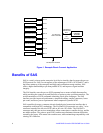Intel® RAID Controller SRCSAS18E User’s Guide 4
PCI Express* Architecture
PCI Express is a local bus system designed to increase data transfers without slowing
down the central processing unit (CPU). You can install the RAID Controller
SRCSAS18E in a PCI Express computer system that has a standard bracket type. With
this adapter in your system, you can connect SAS and SATA devices over the bus.
PCI Express goes beyond the PCI specification in that it is intended as a unifying I/O
architecture for various systems: desktops, workstations, mobile, server, communications,
and embedded devices.
Operating System Support
The RAID Controller SRCSAS18E supports major operating systems, such as:
• Windows 2000*, Windows Server 2003*, and Windows XP*
• Red Hat* Enterprise Linux 3.0 and 4.0
• SuSe* Linux 9.0 and 9 SP1
Note: The operating systems supported by this controller may not be supported by your server
board. See the tested operating system list for your server board at
http://support.intel.com/support/motherboards/server/. See also the tested hardware and
operating system list for the RAID Controller SRCSAS18E to make sure the RAID card
supports your operating system.
Summary of SAS RAID Controller Features
This section provides a summary of the features and benefits of the SAS RAID controller.
It contains information on SAS features, SATA features, PCI performance, integration,
usability, and flexibility.
Features of the RAID Controller SRCSAS18E include:
• Online RAID level migration
• Drive migration
• Drive roaming
• No reboot necessary after expansion
• More than 200 Qtags per array
• Hardware clustering support on the board
• User-specified rebuild rate
• Performance up to 2.5 Gbits/s per lane, PCI Express* x8
• Support for a 256 DDR2 400 MHz SDRAM DIMM portable cache module, providing
battery backup of data in transit (Intel accessory AXXRPCM2)


















